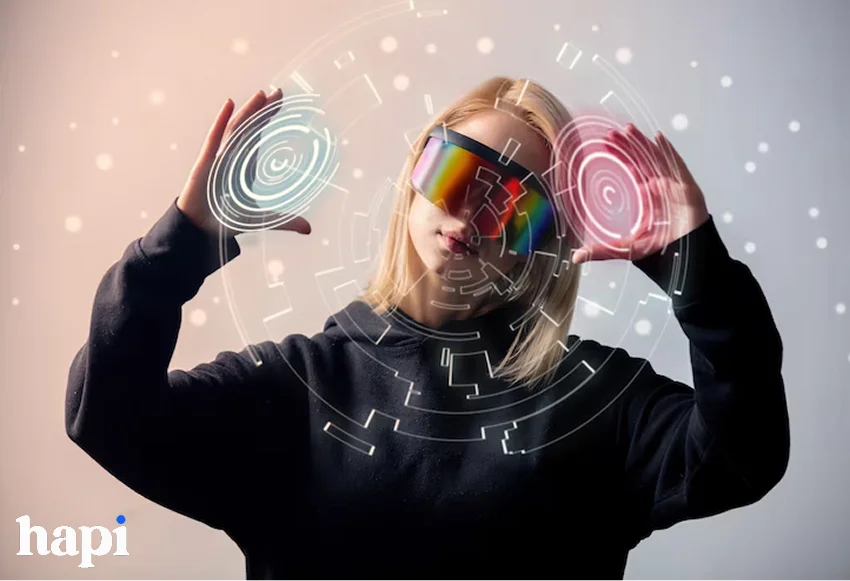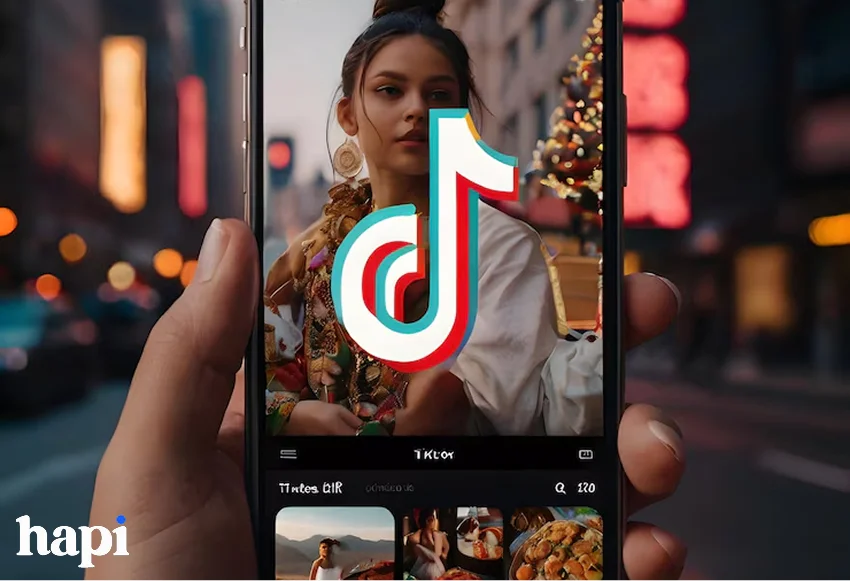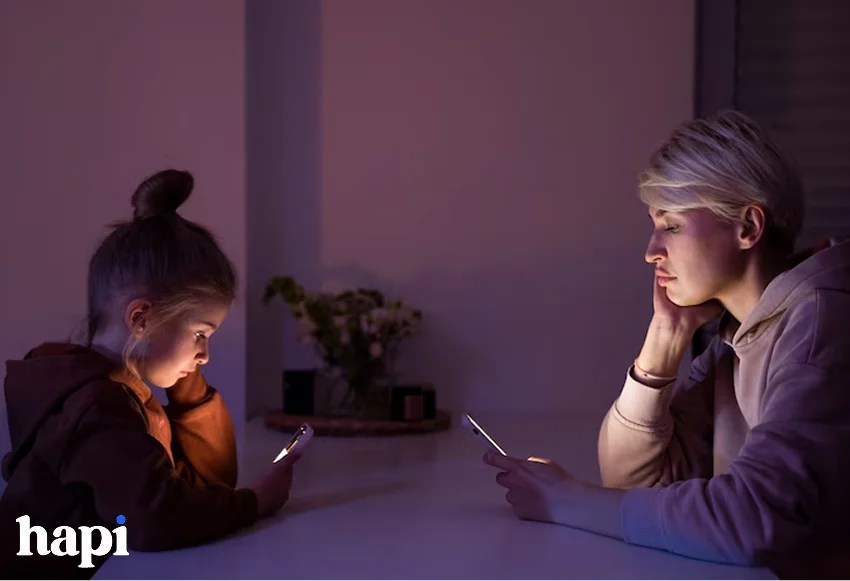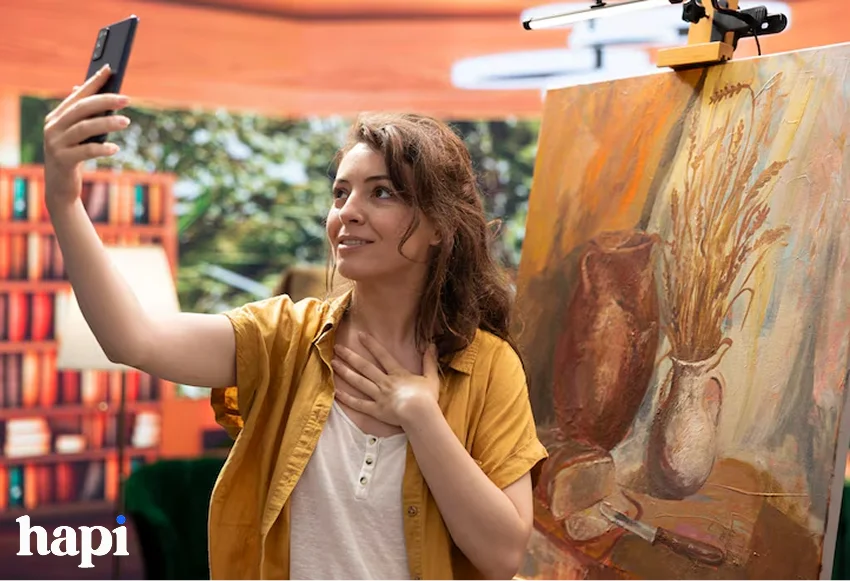
Do you want to change the way you sell your beauty brand? Influencer-led virtual art collaborations could be just what you need.
Beauty firms are moving beyond traditional marketing strategies to create unforgettable experiences that connect with their audience in today’s digital environment. Collaborations on virtual art are the ideal combination of influencer power, technology, and creativity.
Everything you need to know to start virtual art collaborations that boost your beauty brand and have a lasting impact on your target audience will be covered in this book.
Understanding the Power of Virtual Art Collaborations
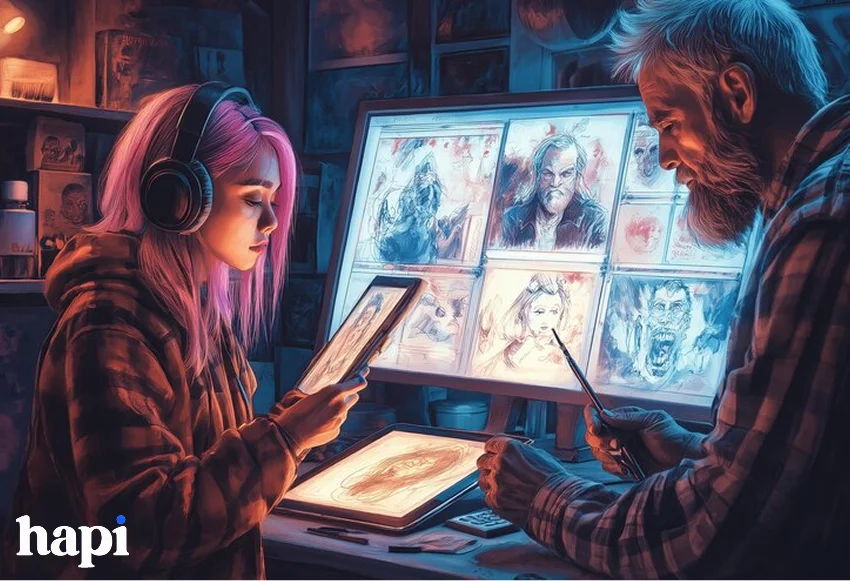
The beauty industry has always thrived on visual appeal. But today’s consumers want more than just pretty pictures – they crave authentic experiences and creative storytelling.
Why Beauty Brands Need Creative Digital Partnerships
Collaborations on virtual art provide something unique. They combine the emotional effect of artistic expression with the authority of influencers. This combination produces material that encourages scrolling and encourages real interaction.
According to a recent study by the Digital Marketing Institute, 78% of customers believe that creative content increases the possibility of remembering a company.
Additionally, these collaborations help beauty firms in reaching younger audiences. Creative, real, and non-promotional digital material is especially appealing to Gen Z and Millennials.
How Virtual Art Elevates Traditional Influencer Marketing
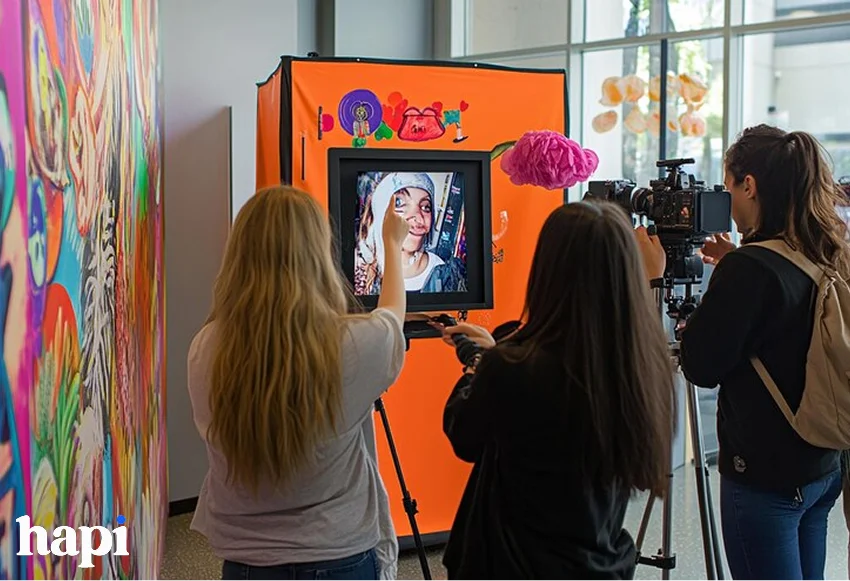
Traditional influencer marketing relies heavily on product reviews and lifestyle integration. These approaches work, but they’re becoming predictable.
Virtual art collaborations take influencer partnerships to a new level by:
• Creating truly unique content that can’t be duplicated
• Showcasing products in unexpected, attention-grabbing ways
• Demonstrating brand values through artistic expression
• Building deeper emotional connections with audiences
When an influencer creates or co-creates digital art featuring your beauty brand, they’re investing more deeply in the partnership. This translates to more genuine enthusiasm and stronger audience response.
5 Success Stories of Virtual Art Beauty Campaigns
1. Fenty Beauty x Digital Artist Ketnipz: Their animated characters using Fenty products generated 4.2M views and a 22% engagement rate.
2. NYX Professional Makeup’s AR Art Filters: Partnering with five digital artists to create Instagram AR filters resulted in 3.7M uses in the first month.
3. Glossier’s Virtual Gallery: Their collaboration with emerging digital artists created an immersive online experience that increased site traffic by 34%.
4. MAC Cosmetics’ Virtual Reality Experience: Partnering with influencer artists to create a VR makeup world led to a 27% increase in their limited-edition collection sales.
5. Milk Makeup’s Digital Illustration Series: Their collaboration with Instagram illustrators featuring product ingredients boosted engagement by 41% compared to their standard content.
Identifying the Right Influencer Artists for Collaboration
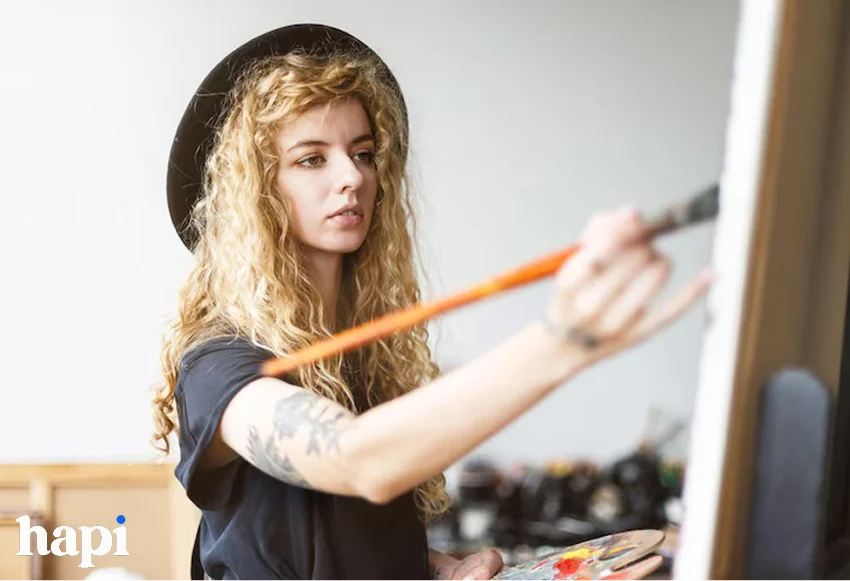
Finding the perfect match between your beauty brand and virtual artists is crucial for collaboration success.
Balancing Artistic Vision with Brand Aesthetic Values
The most successful beauty art collaborations maintain harmony between artistic innovation and brand identity.
Start by clearly defining your brand’s visual identity. Consider:
• Your color palette and how it might translate to digital art
• The emotions your brand aims to evoke
• Your product’s unique selling points that could inspire creative interpretation
• Your brand’s stance on important social values
Look for artists whose style are aligned with your brand aesthetic. The goal is finding someone whose artistic vision can expand your brand story while remaining recognizable to their followers.
For example, if your beauty brand emphasizes natural ingredients, an artist known for authentic, digital illustrations might be ideal. If you’re launching a new cosmetic line, consider artists with bold, experimental styles.
Where to Find Beauty-Focused Digital Artists Online
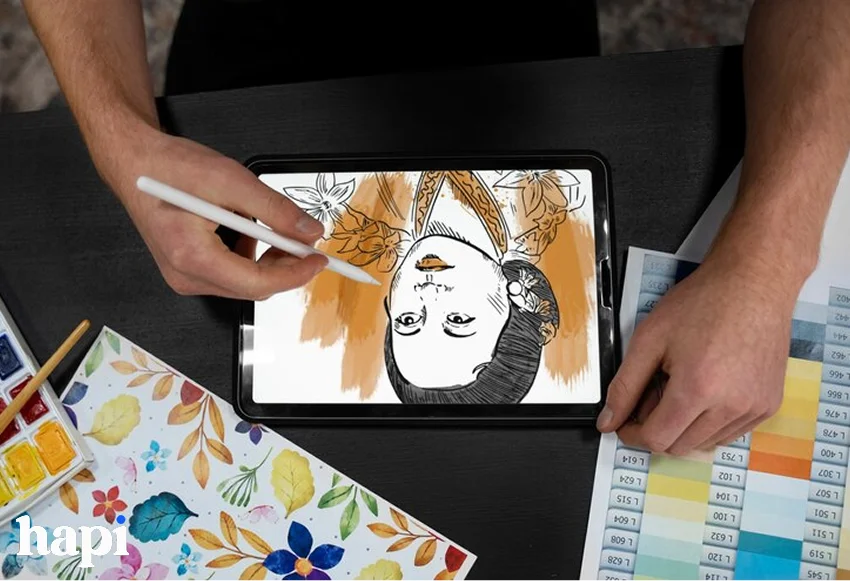
Beauty-focused digital artists are showcasing their work across numerous platforms. Here’s where to look:
• Instagram: Search hashtags like #digitalbeautyart, #beautyillustration, or #virtualbeautyart
• Behance: Filter portfolios by “digital art” and “beauty”
• ArtStation: Browse the “concept art” and “digital” categories
• TikTok: Look for artists creating beauty-related digital content with quick timelapses
• Twitter: Follow art community hashtags and conversations
Don’t overlook niche platforms like Foundation and SuperRare where digital artists are selling their work as NFTs.
Evaluating Influencer Reach in Art Communities
When evaluating potential artist collaborators, look beyond follower count to ensure they have genuine influence in relevant communities.
Key metrics to consider:
• Engagement rate: Look for consistent engagement above industry averages (typically 3-5%)
• Audience demographics: Ensure their followers align with your target customer
• Content resonance: How do their followers respond to art vs. promotional content?
• Community participation: Are they active in conversations with other artists and fans?
• Previous collaborations: How did their audience respond to past brand partnerships?
Request a community insights report from potential collaborators to better understand their sphere of influence within digital art circles.
Planning Your Virtual Art Collaboration Strategy

A successful virtual art collaboration needs clear direction and thoughtful planning.
Setting Clear Objectives for Your Digital Art Campaign
Begin by establishing exactly what you want to achieve with your virtual art collaboration.
Common objectives include:
• Increasing brand awareness among art-appreciating audiences
• Launching a new product with creative visual storytelling
• Repositioning your brand as more innovative or artistic
• Building a content library of unique visual assets
• Driving traffic to digital storefronts
For each objective, define specific, measurable goals. For example:
“Increase Instagram engagement by 25% during the art collaboration campaign” or “Generate 10,000 visits to our product page through art collaboration content.”
Establishing Timelines for Multi-Phase Art Collaborations
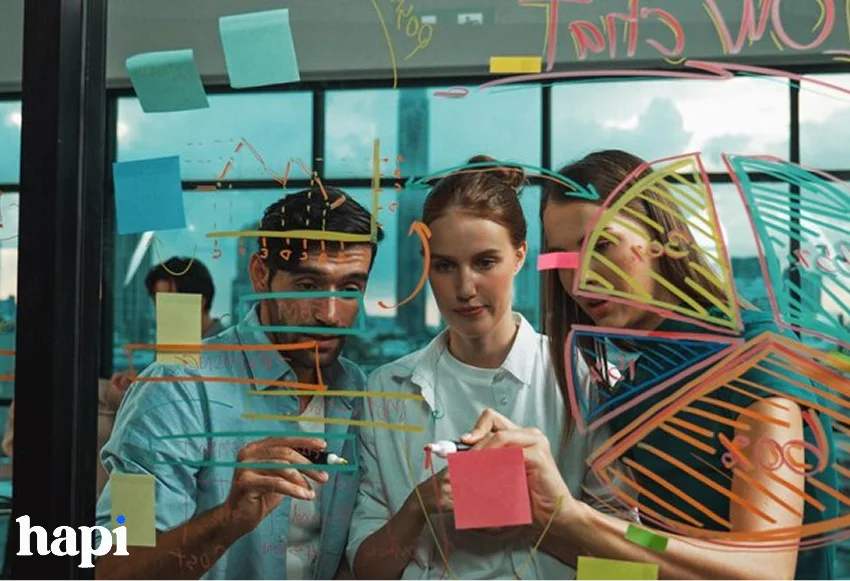
Virtual art collaborations typically require longer timelines than standard influencer partnerships. Plan accordingly with these phases:
Phase 1: Discovery & Planning (2-3 weeks)
• Artist selection and contract negotiation
• Creative brief development
• Initial concept discussions
Phase 2: Creation & Review (3-4 weeks)
• Preliminary sketches and concepts
• Feedback and revisions
• Final art development
Phase 3: Production & Assets (2-3 weeks)
• Creating promotional materials
• Developing campaign landing pages
• Planning social content calendar
Phase 4: Launch & Promotion (4-6 weeks)
• Teaser campaign
• Official launch
• Ongoing content rollout
Phase 5: Evaluation & Extension (2+ weeks)
• Performance analysis
• Repurposing content
• Planning potential follow-up collaborations
Build in buffer time for unexpected creative developments or technical challenges, especially when working with new digital art formats.
Budgeting Effectively for Virtual Creative Partnerships
Art collaborations typically require higher investment than standard product promotion, but can deliver stronger results when budgeted correctly.
Key budget considerations include:
• Artist compensation: Ranging from $2,000-$25,000+ depending on the artist’s reputation and scope of work
• Technology needs: Specialized software, VR/AR development, or digital display platforms
• Promotion costs: Paid amplification of the art content
• Rights management: Licensing for various usage scenarios
• Production expenses: Additional editing, animation, or interactive elements
Consider 15-20% of your budget for unexpected creative opportunities that may increase during the collaboration.
Creating Compelling Virtual Art Collaboration Briefs
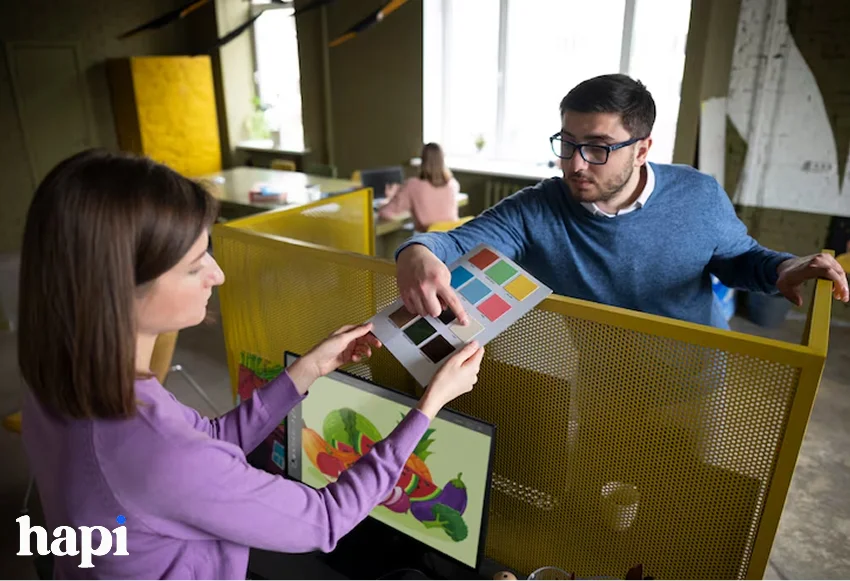
A clear, inspiring brief sets the foundation for successful creative collaboration.
Communicating Your Brand Story Through Artistic Direction
Your brief should capture the essence of your brand story in a way that inspires artistic interpretation.
Start with these elements:
• Your brand’s origin and the problem it solves
• The emotional response you want to evoke in your audience
• Key characters or personas in your brand narrative
• Visual symbols that represent your brand values
• Color psychology relevant to your products
Rather than dictating specific imagery, share the feelings and associations you want the art to convey. For example, instead of saying “create flowers around our lipstick,” try “capture the feeling of spring renewal that our product line embodies.”
Include examples of past brand creative that successfully captured your essence, but clarify that you’re seeking fresh interpretation, not replication.
How to Define Creative Freedom Within Brand Guidelines
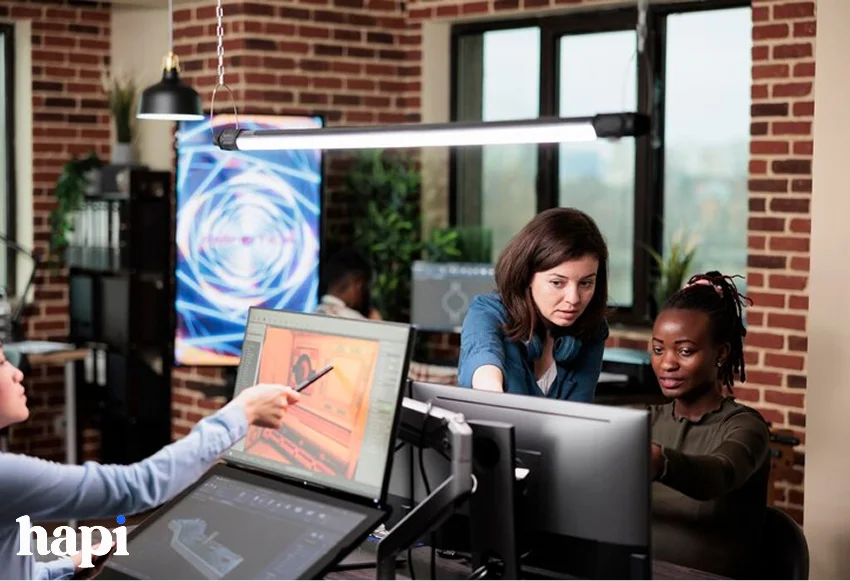
The most successful art collaborations balance creative freedom with brand requirements.
Structure your brief with:
Must-Haves:
• Product visibility requirements
• Logo usage guidelines
• Legal/regulatory considerations
• Key message inclusion
Creative Playground:
• Artistic style and technique
• Color interpretation and expansion
• Narrative approach
• Digital medium selection
Developing Mood Boards for Virtual Art Inspiration
Mood boards provide visual direction without constraining creativity.
Create collaborative mood boards that include:
• Brand imagery that captures your desired aesthetic
• Competitor or adjacent industry examples you admire
• Art from different mediums that evokes your desired feeling
• Color palettes with both brand colors and complementary options
• Typography samples that reflect your brand personality
• Cultural references that resonate with your target audience
Encourage artists to react to specific elements of your mood board, explaining what resonates with their creative vision and how they might interpret these influences.
Implementing Digital Tools for Artistic Collaboration

The right technology makes virtual art collaborations more efficient and effective.
Top Platforms for Real-Time Creative Collaboration Sessions
Real-time collaboration tools enable seamless feedback and creative development.
For Visual Collaboration:
• Figma: Excellent for collaborative design with real-time editing
• Adobe Creative Cloud: Comprehensive tools with sharing capabilities
• Procreate: Popular among digital artists with sharing features
• Concept Board: Infinite canvas for visual collaboration and feedback
For Project Management:
• Asana: Visualize workflow and track deliverables
• Trello: Simple kanban-style boards for creative projects
• Monday.com: Customizable templates for creative workflows
• Notion: All-in-one workspace for notes, tasks, and wikis
For Communication:
• Slack: Channel-based messaging with file sharing
• Discord: Community-building with voice capabilities
• Zoom: Video sessions with screen sharing for reviews
• Loom: Asynchronous video feedback for detailed critiques
When selecting platforms, prioritize those your artist collaborators are already comfortable using. Learning new tools can slow the creative process.
Virtual Reality Options for Immersive Beauty Experiences
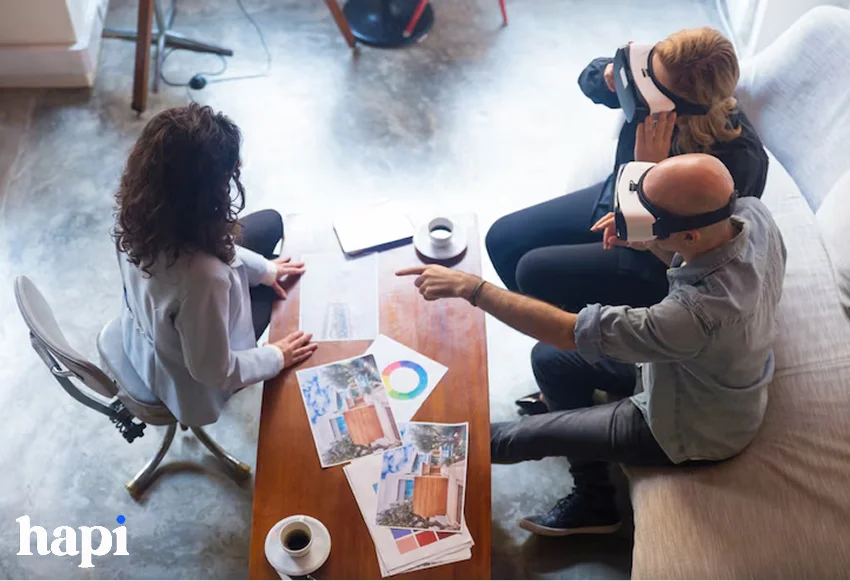
VR creates unique opportunities for beauty brand art collaborations.
Promising VR approaches include:
• Virtual Try-On Galleries: Collaborative art that integrates with AR try-on technology
• 360° Beauty Worlds: Immersive environments built around product experiences
• VR Beauty Events: Launch parties where audiences can interact with digital art
• Mixed Reality Installations: Physical locations enhanced with virtual art elements
Accessible VR platforms to consider:
• AltspaceVR: User-friendly environment for social VR experiences
• Mozilla Hubs: Browser-based VR spaces requiring no downloads
• Spatial: AR/VR collaboration platform with realistic avatars
• VRChat: Popular platform with extensive customization options
Begin with browser-based or mobile VR options to maximize accessibility before investing in higher-end VR equipment requirements.
7 Digital Asset Management Tools for Artwork
Managing digital art assets efficiently is crucial for collaboration success.
1. Brandfolder: Excellent for maintaining brand consistency across digital art assets
2. Bynder: Powerful automation and workflow tools for creative asset management
3. Canto: User-friendly interface with strong metadata capabilities
4. Widen Collective: Robust analytics on asset usage and engagement
5. Adobe Experience Manager Assets: Seamless integration with Creative Cloud
6. Pics.io: Budget-friendly option with Google Drive integration
7. AirTable: Customizable database for tracking art assets and usage rights
Create separate collections for work-in-progress, approved assets, and archive materials to maintain organization throughout the project.
Launching Your Beauty Art Collaboration Successfully
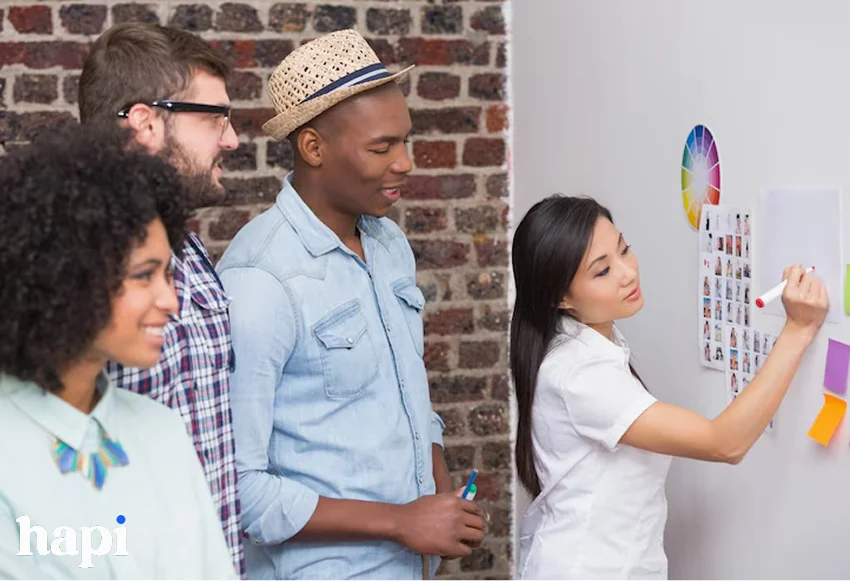
A strategic launch amplifies the impact of your art collaboration.
Creating Buzz Through Strategic Teaser Campaigns
Build anticipation with a carefully orchestrated teaser campaign.
Effective teaser strategies include:
• Behind-the-scenes content: Show glimpses of the artist’s process
• Collaborative livestreams: Host casual sessions where artists discuss their approach
• Progressive reveals: Unveil small portions of the artwork over days or weeks
• Interactive puzzles: Create digital puzzles from artwork fragments
• Influencer previews: Give select influencers early access to tease their audiences
Start your teaser campaign 7-14 days before full launch, increasing frequency as the release date approaches.
Use the 70/30 rule: 70% of teaser content should focus on the artistic process and story, while only 30% should mention the product directly.
Coordinating Cross-Platform Social Media Release Strategies

Different platforms require tailored approaches for maximum impact.
Instagram:
• Story sequences revealing the creative journey
• Carousel posts showing evolution of the artwork
• IGTV for longer artistic discussions
TikTok:
• Time-lapse creation videos
• Artist-led beauty tutorials inspired by the collaboration
• Duet challenges incorporating elements of the artwork
Twitter:
• Conversational threads exploring the collaboration’s inspiration
• Twitter Spaces discussions with the artists
• Artwork detail close-ups with thought-provoking questions
YouTube:
• Documentary-style videos about the collaboration process
• Artist interviews exploring their techniques
• Tutorial content showing how to achieve looks inspired by the art
Stagger your releases across platforms to maintain momentum, with primary content on your brand’s strongest channel and adapted versions elsewhere.
Hosting Virtual Launch Events for Maximum Engagement
Virtual events create memorable experiences around your art collaboration.
Successful virtual launch formats include:
• Digital Gallery Openings: Interactive online spaces where audiences can explore the artwork
• Artist Masterclasses: Live demonstrations of techniques used in the collaboration
• Virtual Reality Gatherings: Immersive social experiences in VR environments
• Livestreamed Creation Sessions: Watch artists create additional pieces in real-time
• Interactive Q&As: Opportunities for audiences to engage directly with artists
Make these events accessible by offering both scheduled live experiences and recorded versions for different time zones.
Create exclusive launch event merchandise or digital collectibles to increase attendance and engagement.
Measuring the Impact of Virtual Art Collaborations
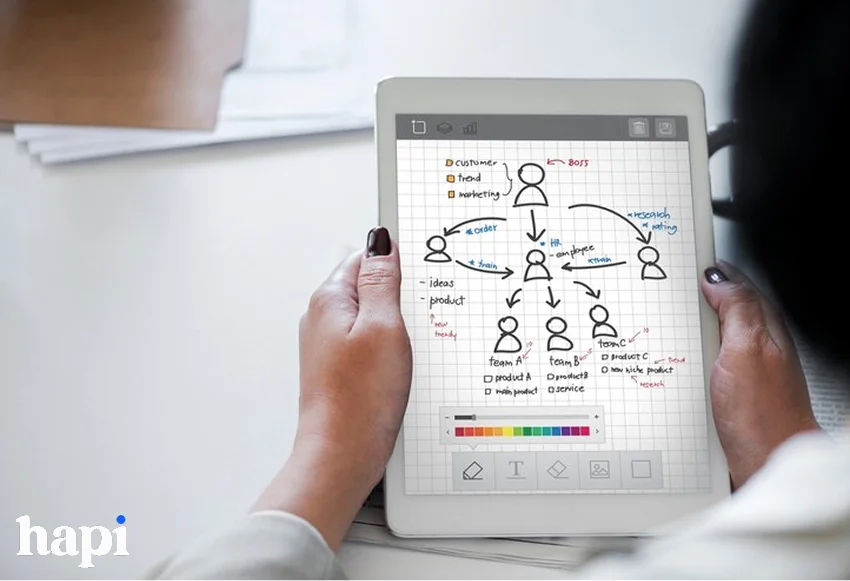
Data-driven analysis helps optimize your art collaboration strategy.
Key Performance Indicators for Beauty Art Partnerships
Track these essential metrics to evaluate collaboration success:
Engagement Metrics:
• Average time spent with interactive art pieces
• Comment sentiment and theme analysis
• Sharing rates compared to standard content
• User-generated content inspired by the collaboration
Brand Impact Metrics:
• Brand perception shifts (measured through surveys)
• Earned media coverage of the art collaboration
• Follower growth during campaign period
• Website traffic from art-related content
Business Metrics:
• Direct sales attributed to art collaboration
• Email sign-ups from campaign landing pages
• Retail partner interest generated
• Customer acquisition cost comparison
Establish baselines before launch by analyzing performance of previous campaigns and industry benchmarks.
Tools for Tracking Engagement With Digital Artwork
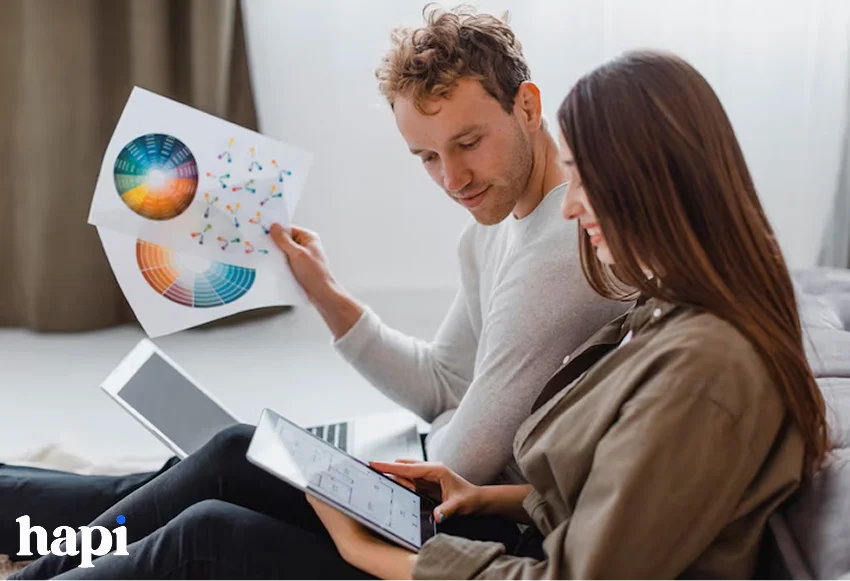
Specialized tools help measure how audiences interact with your virtual art:
• Hotjar: Creates visual heatmaps showing how users interact with digital art on your website
• Google Analytics: Tracks user flow through art-related landing pages
• Brandwatch: Monitors social conversations about your art collaboration
• Sprout Social: Measures cross-platform engagement with collaboration content
• GIFS.com: Tracks GIF views and shares when you convert art segments into shareable GIFs
For AR experiences, platforms like Spark AR and Lens Studio provide detailed analytics on filter usage and sharing.
Set up dedicated UTM parameters for all art collaboration links to isolate their performance in your analytics tools.
Analyzing Conversion Rates from Art to Purchase
Connect artistic engagement to business outcomes with these approaches:
• Create exclusive landing pages for products featured in the art collaboration
• Implement pixel tracking to follow user journeys from art interaction to purchase
• Offer art collaboration-specific discount codes to track attribution
• Compare conversion rates between users who engaged with the art versus those who didn’t
• Survey purchasers about the influence of the artistic content on their decision
Look beyond immediate conversions; art collaborations often influence purchase decisions days or weeks later through increased brand affinity.
Extending the Lifespan of Your Art Collaboration
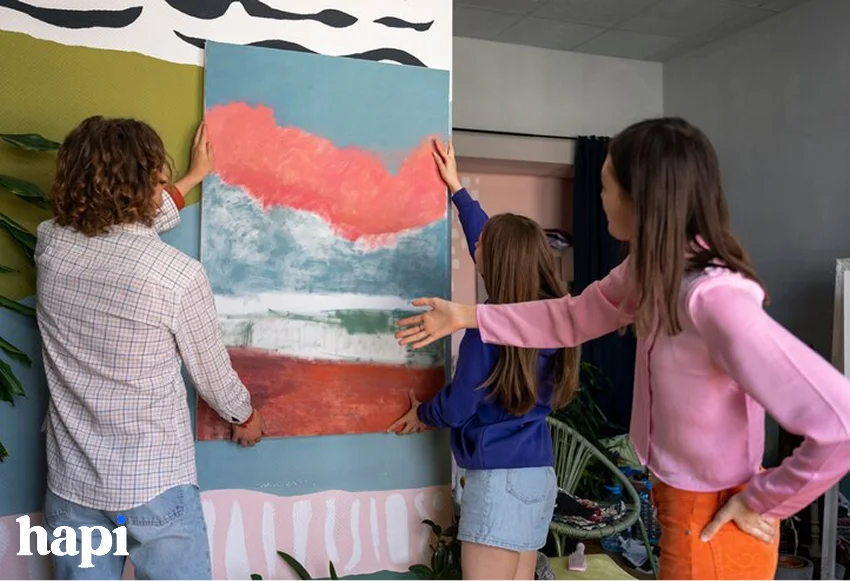
Strategic planning can maximize the long-term value of your art collaboration.
Transforming Digital Art into Limited Edition Products
Convert virtual art into physical products to extend collaboration value:
• Limited edition packaging featuring the digital artwork
• Merchandise collections with art prints on beauty accessories
• Collector’s box sets combining products and art prints
• Scannable product inserts that unlock additional digital art
• Beauty tools or applicators designed by the collaborating artist
Creating Virtual Galleries for Long-Term Brand Exposure
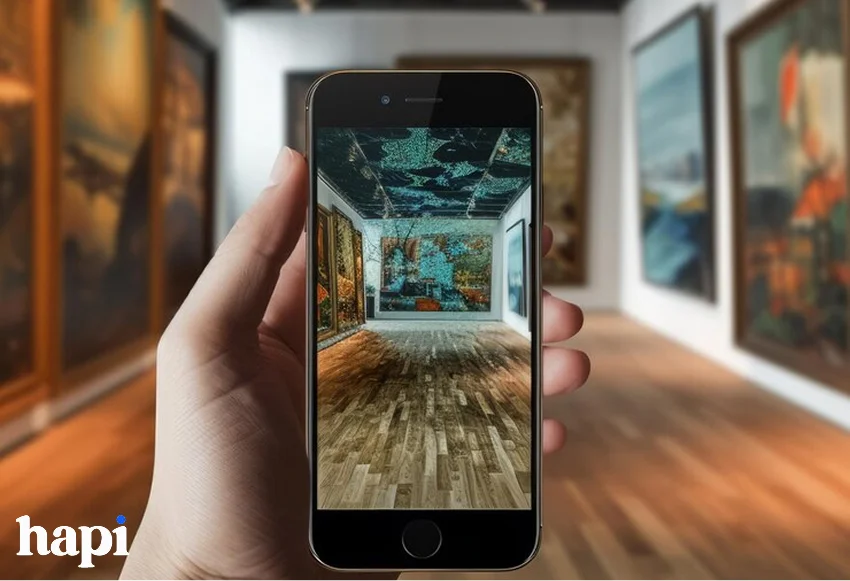
Develop permanent digital spaces to showcase your art collaborations:
• Dedicated microsite featuring interactive galleries of all brand art collaborations
• Augmented reality exhibitions accessible through your brand’s app
• Virtual showrooms where visitors can explore artwork in 3D environments
• Interactive timeline showcasing your brand’s artistic partnerships
• Digital museums where art is paired with product development stories
Keep these galleries fresh by adding behind-the-scenes content, artist interviews, and user-submitted interpretations.
Partner with established virtual art platforms like Artsy or SuperRare to reach dedicated art audiences.
Repurposing Collaborative Artwork Across Marketing Channels
Extend the value of your art investments through strategic repurposing:
• Transform artwork sections into email header designs
• Create animated loading screens for your website
• Develop social media profile frames and backgrounds
• Design digital wallpapers as customer gifts
• Create seasonal variations of the original artwork
Develop a content calendar specific to art repurposing, planning for at least 6-12 months of strategic content releases.
Consult with legal teams to ensure your artist contracts permit these various applications.
Future Trends in Beauty Brand Art Collaborations

Stay ahead by understanding emerging technologies and approaches.
How NFTs Are Revolutionizing Beauty-Art Partnerships
Non-fungible tokens are creating new possibilities for beauty-art collaborations:
• Limited edition digital collectibles that unlock physical product access
• Tokenized ownership of collaboration artwork with royalty structures
• Virtual makeup looks sold as wearable NFTs in metaverse environments
• Collaborative NFT drops where proceeds support beauty-related causes
• Authentication certificates for limited edition products linked to blockchain
Partner with established NFT marketplaces like Foundation or OpenSea to reach existing collectors.
Augmented Reality Integration in Beauty Art Experiences
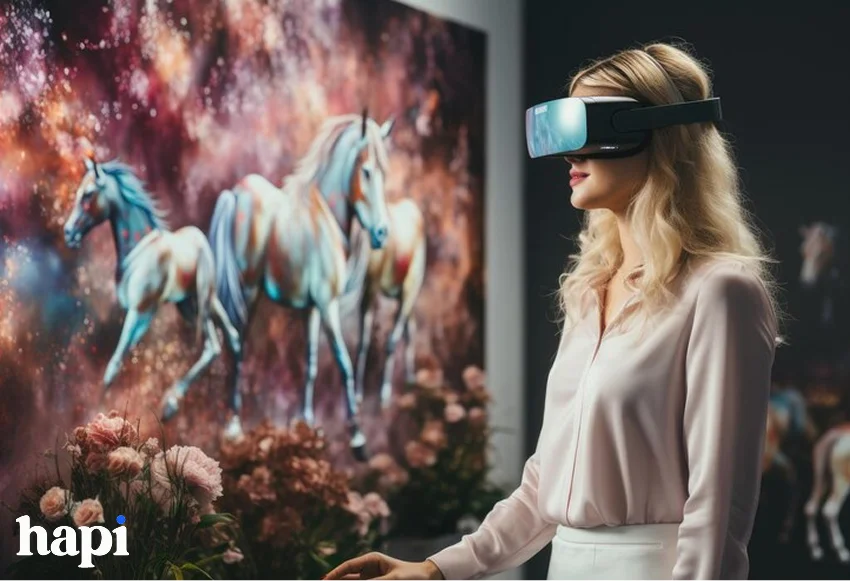
AR is transforming how consumers interact with beauty-related art:
• Virtual try-on experiences enhanced with artistic elements
• Location-based AR installations that appear at retail locations
• Art-inspired AR filters that transform with different lighting conditions
• Interactive mirrors that overlay collaborative artwork onto customer reflections
• Scannable product packaging that reveals animated artistic content
Focus on AR experiences that work on standard smartphones rather than requiring specialized hardware.
Test AR features with small audience segments before full launch to identify and resolve technical issues.
Emerging Technologies Shaping Virtual Creative Collaborations
These innovations will define the next wave of beauty-art partnerships:
• Generative AI: Collaborations between artists and AI systems to create evolving artwork
• Haptic Technology: Touch-responsive digital art that changes based on virtual texture interactions
• Blockchain Verification: Authenticating limited edition beauty products through digital art provenance
• Biometric Responses: Artwork that adapts based on the viewer’s emotional reactions
• Voice-Activated Art: Digital installations that transform through voice commands
Partner with technology incubators and university art-tech programs to gain early access to emerging platforms.
Conclusion
Virtual art collaborations represent an exciting frontier for beauty brands seeking to create meaningful connections with today’s digital-savvy consumers. By thoughtfully selecting artistic partners, implementing effective collaboration tools, and strategically launching your campaigns, your beauty brand can develop memorable experiences that resonate far beyond traditional marketing.
Remember that successful virtual art collaborations balance artistic integrity with brand objectives. Give artists enough creative freedom to produce truly innovative work while ensuring your brand’s essence shines through.
Start planning your first virtual art collaboration today, and watch as your beauty brand transforms from a product purveyor to a cultural creator at the intersection of beauty, technology, and artistic expression.
